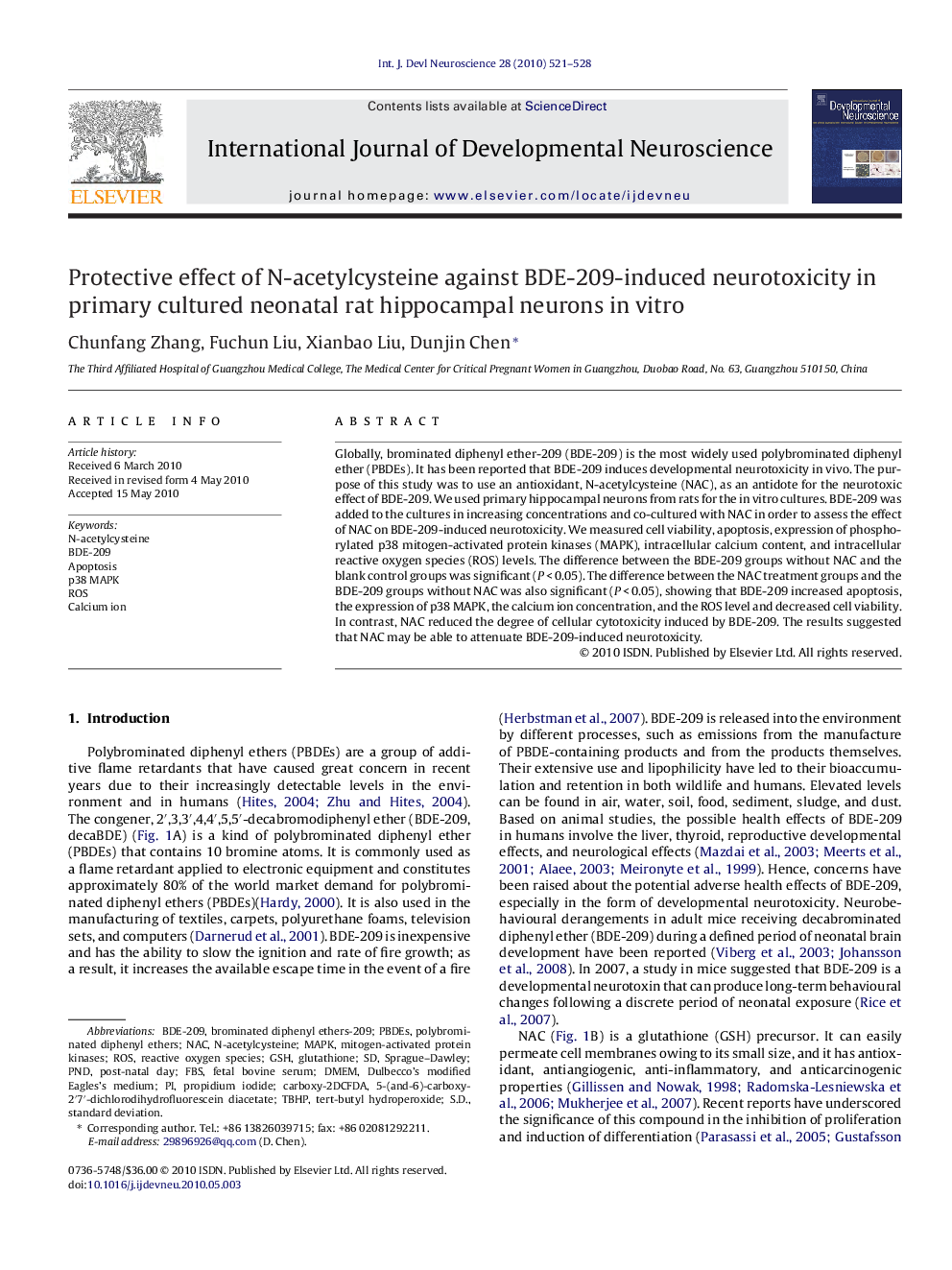| Article ID | Journal | Published Year | Pages | File Type |
|---|---|---|---|---|
| 2786609 | International Journal of Developmental Neuroscience | 2010 | 8 Pages |
Globally, brominated diphenyl ether-209 (BDE-209) is the most widely used polybrominated diphenyl ether (PBDEs). It has been reported that BDE-209 induces developmental neurotoxicity in vivo. The purpose of this study was to use an antioxidant, N-acetylcysteine (NAC), as an antidote for the neurotoxic effect of BDE-209. We used primary hippocampal neurons from rats for the in vitro cultures. BDE-209 was added to the cultures in increasing concentrations and co-cultured with NAC in order to assess the effect of NAC on BDE-209-induced neurotoxicity. We measured cell viability, apoptosis, expression of phosphorylated p38 mitogen-activated protein kinases (MAPK), intracellular calcium content, and intracellular reactive oxygen species (ROS) levels. The difference between the BDE-209 groups without NAC and the blank control groups was significant (P < 0.05). The difference between the NAC treatment groups and the BDE-209 groups without NAC was also significant (P < 0.05), showing that BDE-209 increased apoptosis, the expression of p38 MAPK, the calcium ion concentration, and the ROS level and decreased cell viability. In contrast, NAC reduced the degree of cellular cytotoxicity induced by BDE-209. The results suggested that NAC may be able to attenuate BDE-209-induced neurotoxicity.
